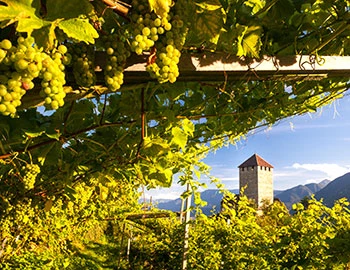Mittelburgenland
Mittelburgenland: variations in Blaufränkisch
The Blaufränkisch variety has increasingly enthralled wine connoisseurs around the world. And nowhere does the variety show as many stylistic variations as in Mittelburgenland. It is not surprising that the region, which has a cultivation area of 2,120 hectares, today defines itself confidently as “Blaufränkisch country.” Given the euphoria surrounding the leading variety, it is sometimes forgotten that other red varieties, especially Bordeaux growths such as Cabernet Sauvignon or Merlot, also thrive here.
There are both corpulent wines with a fruity, almost southern charm and straightforward, robust crus with a finesse that, in their most successful iterations, almost resemble great Pinot Noirs. Over the past decade, Mittelburgenland has shown more detailed facets of Blaufränkisch, which nowadays spring primarily from subtle terroir variations rather than processing. And this evolution is not yet complete. One great asset in this is the stock of old vines from wine growers who sell their grapes.
Warm air from the east
The heart of the wine-growing area lies in the triangle of Neckenmarkt, Deutschkreutz and Horitschon. A second, smaller growing area is located around 20 kilometers south at Lutzmannsburg. Although the area is not directly adjacent to Lake Neusiedl, its influence on the area’s microclimate is significant. Through the open terrain to the east, the warm, dry air from the Pannonian Plain can enter freely in the summer. At the same time, rolling hills protect the vineyards from cold and moist air from the northwest.
The vines are rooted here in mostly heavy, calcareous clay with varying proportions of sand and rubble. Its strong water storage capacity is a great advantage in the mostly dry summers. The soils in the upper parts of the slopes are sparse, with varying proportions of gneiss, schist and mica. With at least 300 days of sunshine per year and around 600 millimeters of precipitation per year per square metre, optimal conditions for growing premium red wines prevail in Mittelburgenland.
High-class assemblages
Apart from the prime variety of Blaufränkisch, some of the best red cuvées in Austria are also produced in Mittelburgenland. This holds true for both classic Bordeaux blends (with Cabernet Sauvignon and Merlot), and also for typical




